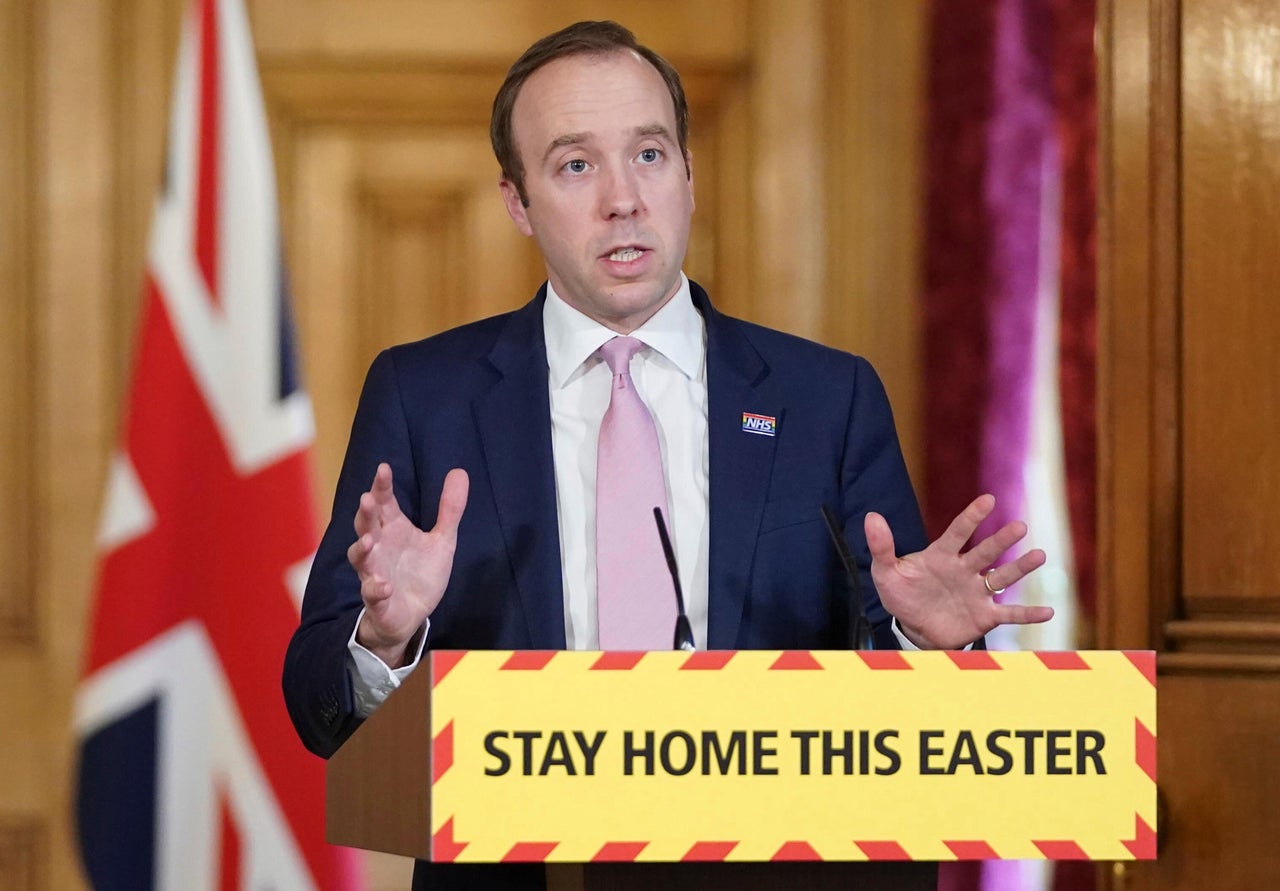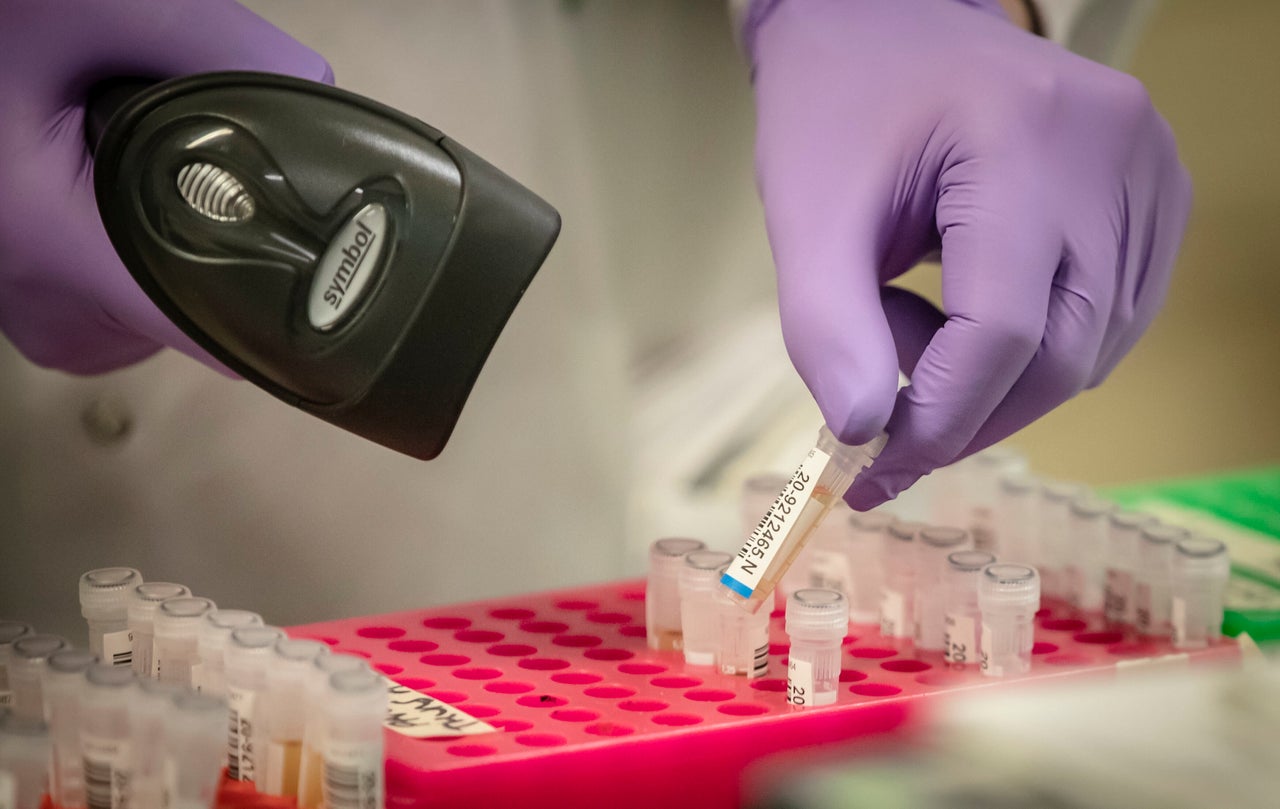Get the latest on coronavirus. Sign up to the Daily Brief for news, explainers, how-tos, opinion and more
At the start of April the government made it clear that testing would be a key weapon in the country’s arsenal against coronavirus.
Testing would help restore some of the uncertainty stolen by the virus, health secretary Matt Hancock reassured Britons in a statement. “It’s a big part of how we’re going to defeat this disease,” he wrote.
But with just three days to go until the end of the month, the country is less than halfway to completing this mission.
On Sunday, just over 37,000 coronavirus tests were carried out, health secretary Matt Hancock said at Monday’s press conference.
Nonetheless, the government has insisted it’s “on track” to meet its target, with health minister Edward Argar telling the public to expect “very dramatic increases” in daily tests.
So what do ministers expect to change before the deadline? Here’s what you need to know.
What did the government actually promise?

When it comes to the government’s aims on coronavirus testing, it’s fair to say it has put out some mixed messages in recent weeks.
At different moments, ministers have variously said that the UK target was for 25,000, 100,000 and 250,000 Covid-19 tests a day.
But the main target the government has set for itself is for the UK to carry out 100,000 daily tests by the end of April.
In a statement on April 2, Hancock said this would be achieved by increasing testing across five key pillars:
- NHS swab testing for patients and critical key workers
- Commercial swab testing for critical key workers at testing sites across the UK
- Antibody tests to determine if people are immune to the virus
- Population surveillance testing – this involves Public Health England testing people’s blood to work out what percentage of the population has already had the virus
- British life sciences companies turning their resources to mass testing
“These five pillars represent a comprehensive strategy to put in place the testing that is mission-critical as we fight this battle against Covid-19,” Hancock said.
While it is not exactly clear how testing in each of these pillars will grow in order to reach the 100,000 mark, we do know that the government wants to scale up NHS swab testing (pillar one) from 10,000 tests a day to 25,000 by the end of April.
We also know that the government has had a serious issue finding reliable anti-body tests (pillar three). These tests determine whether someone has already had the virus by looking for signs of immunity.
Public Health England’s Professor John Newton told MPs on April 8 that the government did not expect to be doing antibody tests at all by the end of the month.
“We’re not relying on antibody tests to make up that target,” he said, according to the Guardian.
“We were optimistic that a number of companies have been offering us these quick antibody tests and we were hoping they would be fit for purpose. They all work to some extent, but are not good enough to rely on.”
How many tests is the UK carrying out at the moment?
On Sunday, the UK carried out 37,024 coronavirus tests, Hancock confirmed during the daily Downing Street press conference on Monday.
The figure represents a significant day-on-day jump in tests, increasing by around 8,000 from Saturday.
But it also means that, with just three days to go until the deadline – and four days to go until the result of the testing campaign is revealed – the government is well under halfway to reaching its 100k target.
To meet its aim, the UK needs to be carrying out an extra 63,000 tests a day by Thursday.
The rise in daily tests seen on Sunday comes after the government announced last week essential workers and their households would be able to book Covid-19 tests online.
The move was made to ensure symptomatic key workers – or those with symptomatic family members – were not stuck at home in self-isolation and away from work when they didn’t have Covid-19.
On Monday, there were no more coronavirus home testing kits available to order just 70 minutes after they first went online.
So, how does the government plan to make up the difference?

Despite the numbers, the government has insisted it is on track to meet its target – and has placed a lot of emphasis on the ability of its three “Lighthouse Labs” to increase the number of tests it’s able to carry out.
Ministers hope that each of these newly-created coronavirus “mega-labs” – located in Milton Keynes, Glasgow and Cheshire – will be able to test thousands of patient samples a day as they each scale up capacity.
The labs have been set up to test samples from drive-through testing sites, with plans to build 50 of these across the UK. As of Monday, 30 of the drive-through sites were in operation.
Meanwhile, the government announced on Sunday that the Armed Forces would operate mobile Covid-19 testing sites, travelling to frontline workers in places such as care homes, fire stations and prisons. There are currently 90.
On Monday, health minister Edward Argar told LBC radio that the target to complete 100,000 tests a day “is still very much there”.
“It is a government target and we are massively ramping up the efforts to do this,” he said.
“There is a few days to go but we are confident that we are on target for that, not least with the expansion last week with who is eligible to actually access those tests now.
“It is huge numbers of people and we have seen how many have tried to access those tests in the past few days. I expect we will see exponential increases every day up to that target being met.”
However, Downing Street said it will be “difficult to know” if the government has hit its target on Friday.
Under the current system, the government reveals the number of coronavirus tests carried out the day before, suggesting the number of tests carried out on April 30 should be confirmed on Friday.
But the prime minister’s official spokesperson cautioned on Monday that the testing numbers often have a “significant time lag”.
He said it will be “difficult” to know on Friday, adding: “For example, home testing kits can take up to 72 hours to get the results for and therefore show up in the numbers.”
“It’s going to take a little while longer for that to be clear.”
Infographics provided by Statista.
